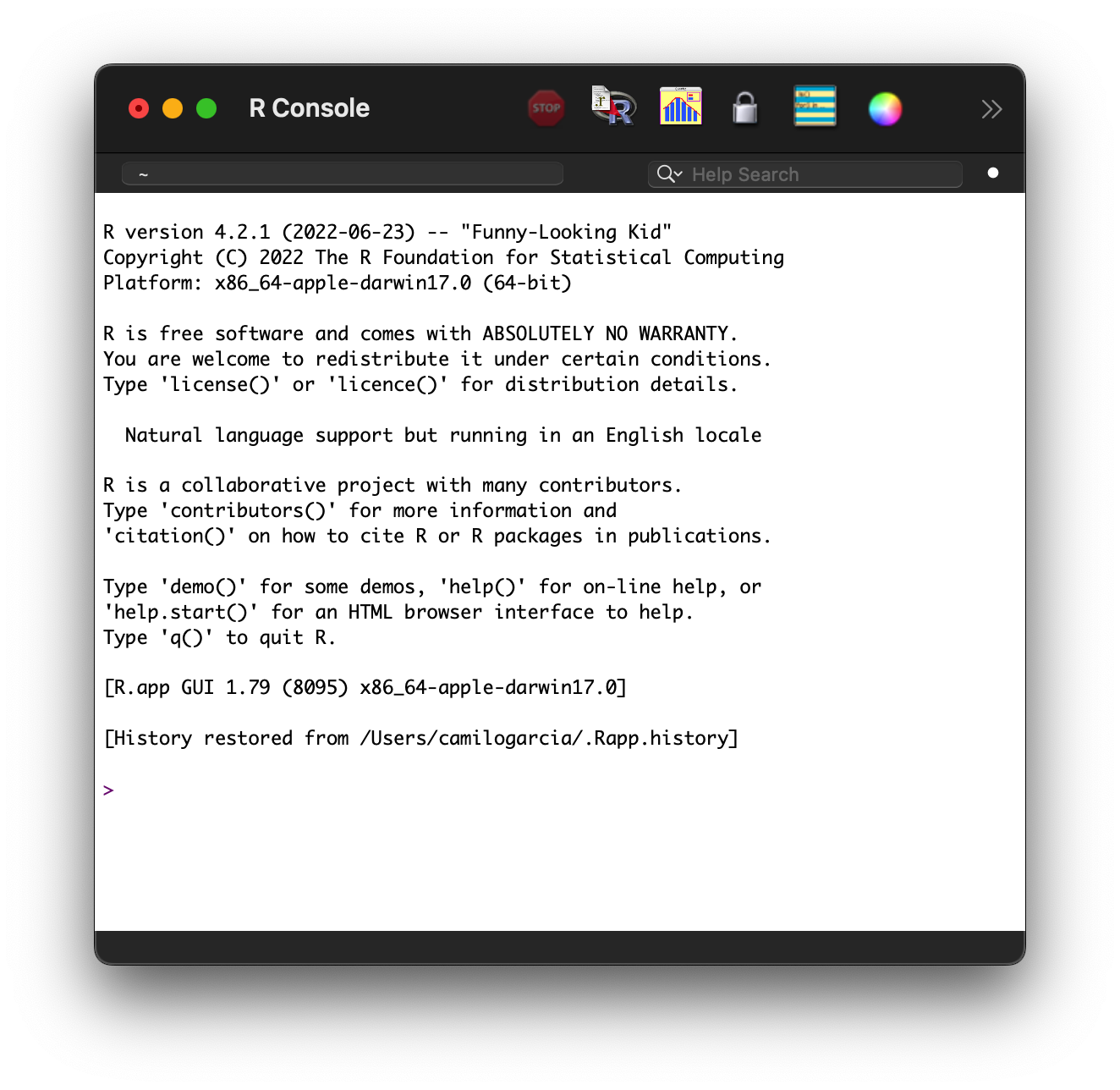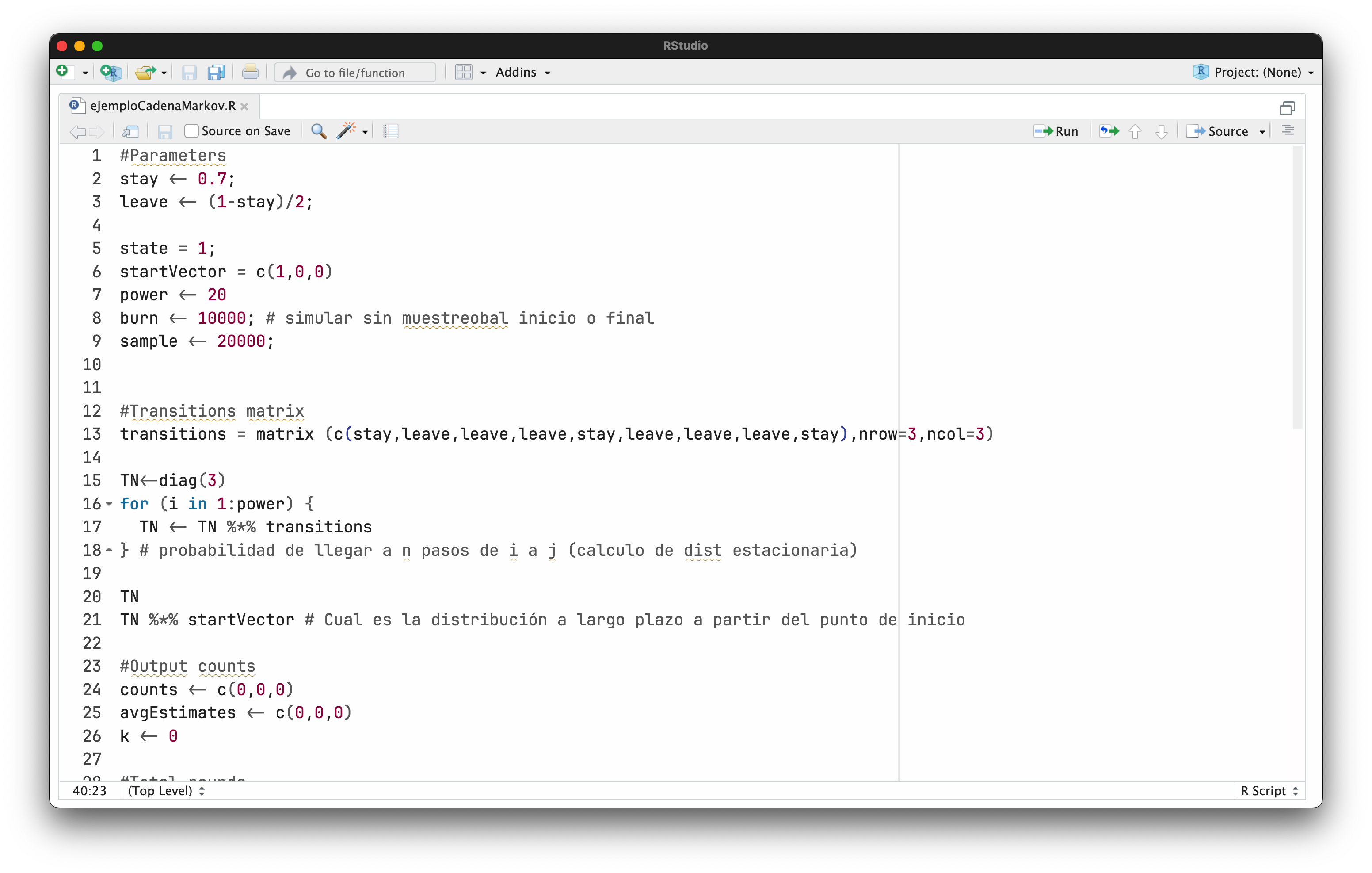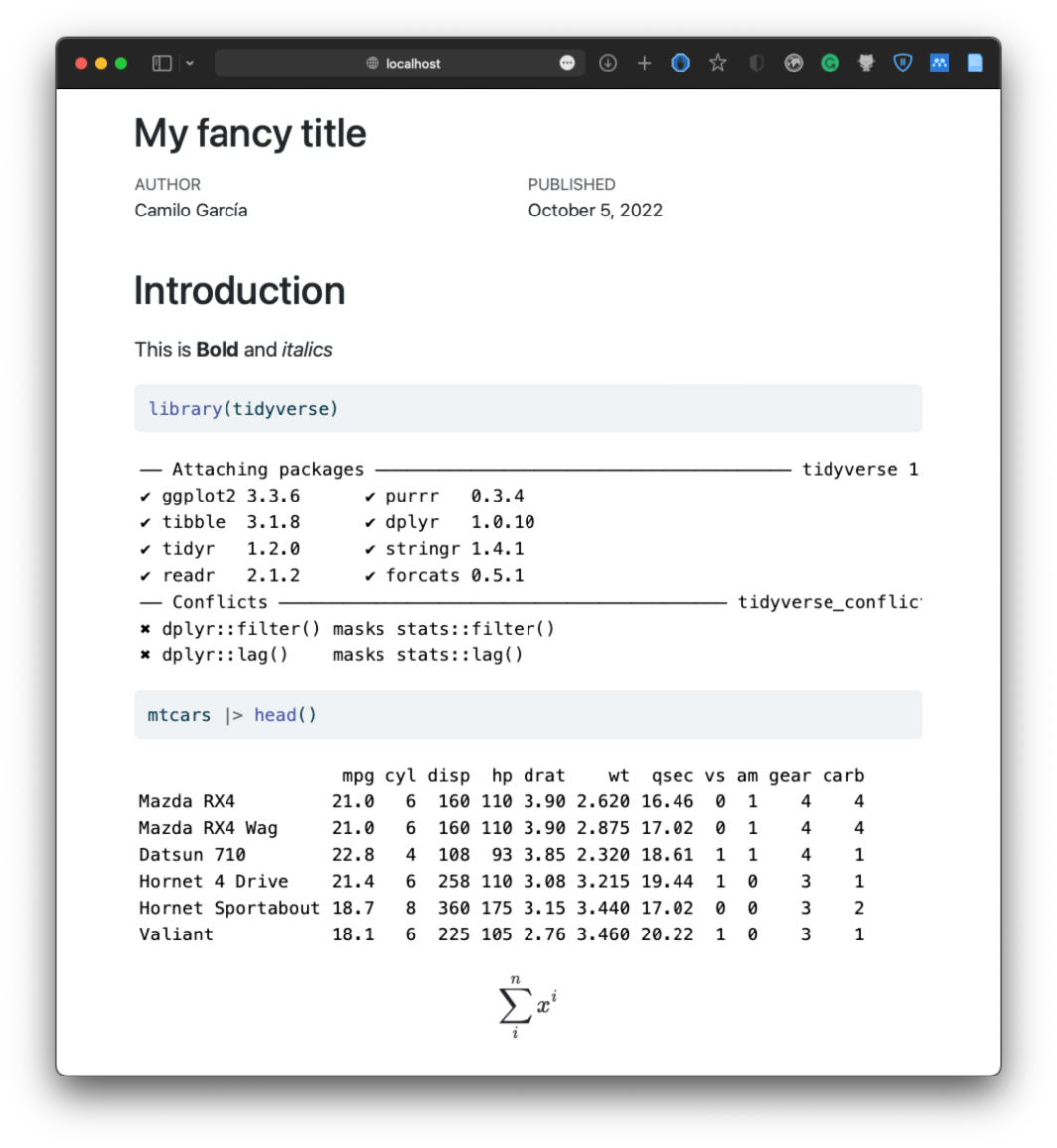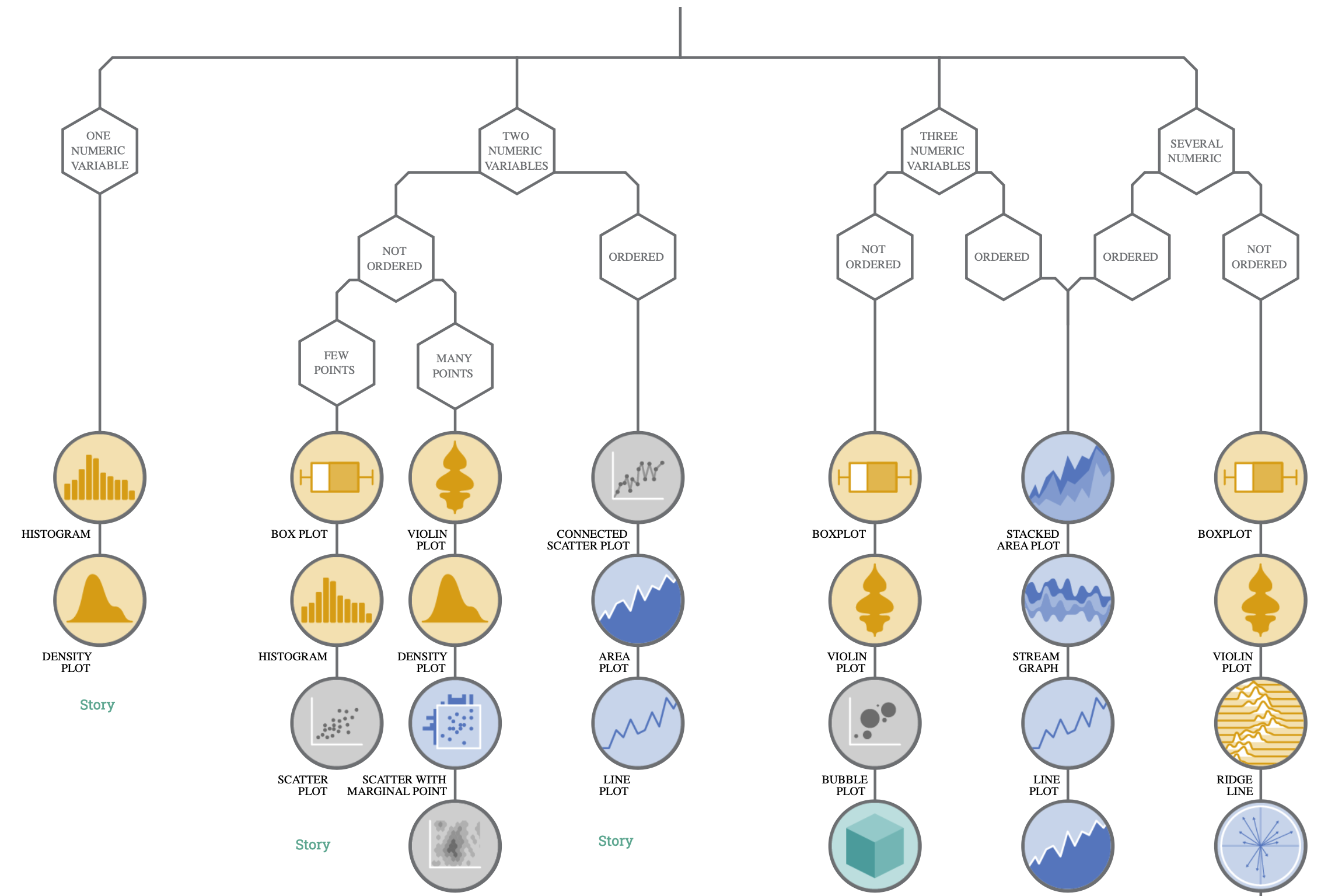An introduction to R
https://bit.ly/3ZRsbnA
R and Rstudio

R console

Rstudio IDE

An script example
Rmarkdown and Dynamic Documents
The YAML block
Code

Installing Packages
Two main commands are used to manage packages in R:
- Installation:
install.packages("pkgname")- Loading the package:
library(pkgname)Getting Help
Important Syntax
Creating Objects
Anything that is created in R whether it is a vector, matrix, function, data, figures, strings (character), etc. can be assigned into an object using the <- operator:
name <- "camilo"
name[1] "camilo"typeof(name)[1] "character"Vectors
A vector is a concatenation of other objects of the same type.
Matrices
A matrix is an array of objects that are ordered in rows and columns
cols
rows cl1 cl2 cl3
rw1 23 98 68
rw2 58 54 74Lists
A list is a set of ordered components (objects with assignments)
$name
[1] "Alejandro"
$exam
[1] 5
$quizzes
[1] 4.0 5.0 3.5 4.2Managing Data
Manually Generated Data
The seq() function can be used to create a sequence of data:
data <- seq(1,100,10)
data [1] 1 11 21 31 41 51 61 71 81 91You can also generate factors/levels using the gl() function.
let’s try an example:
The data.frame object is a native structure/object to store table like data
Importing Data
There are many function to import data to the R session. read.table() is one of the basic ones:
spp_data <- read.table(
file = "data/especies.txt",
sep = "\t",
h = TRUE
)
spp_dataWe can select subsets of the data set using many strategies.
- The
$operator for column subseting:
spp_data$Especie [1] "C_fitzingeri" "D_ebraccatus" "E_pustulosus" "O_histrionica"
[5] "S_phaeota" "C_fitzingeri" "D_ebraccatus" "E_pustulosus"
[9] "O_histrionica" "S_phaeota" "C_fitzingeri" "D_ebraccatus"
[13] "E_pustulosus" "O_histrionica" "S_phaeota" "C_fitzingeri"
[17] "D_ebraccatus" "E_pustulosus" "O_histrionica" "S_phaeota"
[21] "C_fitzingeri" "D_ebraccatus" "E_pustulosus" "O_histrionica"
[25] "S_phaeota" - The indexed way:
spp_data[,2] [1] "C_fitzingeri" "D_ebraccatus" "E_pustulosus" "O_histrionica"
[5] "S_phaeota" "C_fitzingeri" "D_ebraccatus" "E_pustulosus"
[9] "O_histrionica" "S_phaeota" "C_fitzingeri" "D_ebraccatus"
[13] "E_pustulosus" "O_histrionica" "S_phaeota" "C_fitzingeri"
[17] "D_ebraccatus" "E_pustulosus" "O_histrionica" "S_phaeota"
[21] "C_fitzingeri" "D_ebraccatus" "E_pustulosus" "O_histrionica"
[25] "S_phaeota" - Using a
subset()and a condition:
subset(spp_data, Prob_presencia > 0)Common Operations
85+12[1] 9756-29[1] 278*8[1] 6470/100[1] 0.72^4[1] 16Importance of precedence
2+3*2-2^3[1] 0((2+3)*2-2)^3[1] 512Operations with vectors:
[1] 39 18 70 15What if you want to add another value to the vector:
time[5] = 5
time[1] 34 13 65 10 5Descriptive Stats
The simplest way to generate descriptive stats of a dataset is using summary() function.
summary(spp_data) Zona Especie Prob_presencia variacion
Min. :1 Length:25 Min. :0.01996 Min. :11.00
1st Qu.:2 Class :character 1st Qu.:0.27549 1st Qu.:33.00
Median :3 Mode :character Median :0.42008 Median :59.00
Mean :3 Mean :0.46289 Mean :52.57
3rd Qu.:4 3rd Qu.:0.65240 3rd Qu.:72.50
Max. :5 Max. :0.92721 Max. :89.00
NA's :1 NA's :2 Inspecting Data
Let’s create an histogram, using base hist() function:

BIOL2205 - Inferencia e Informática - DCB - Uniandes
